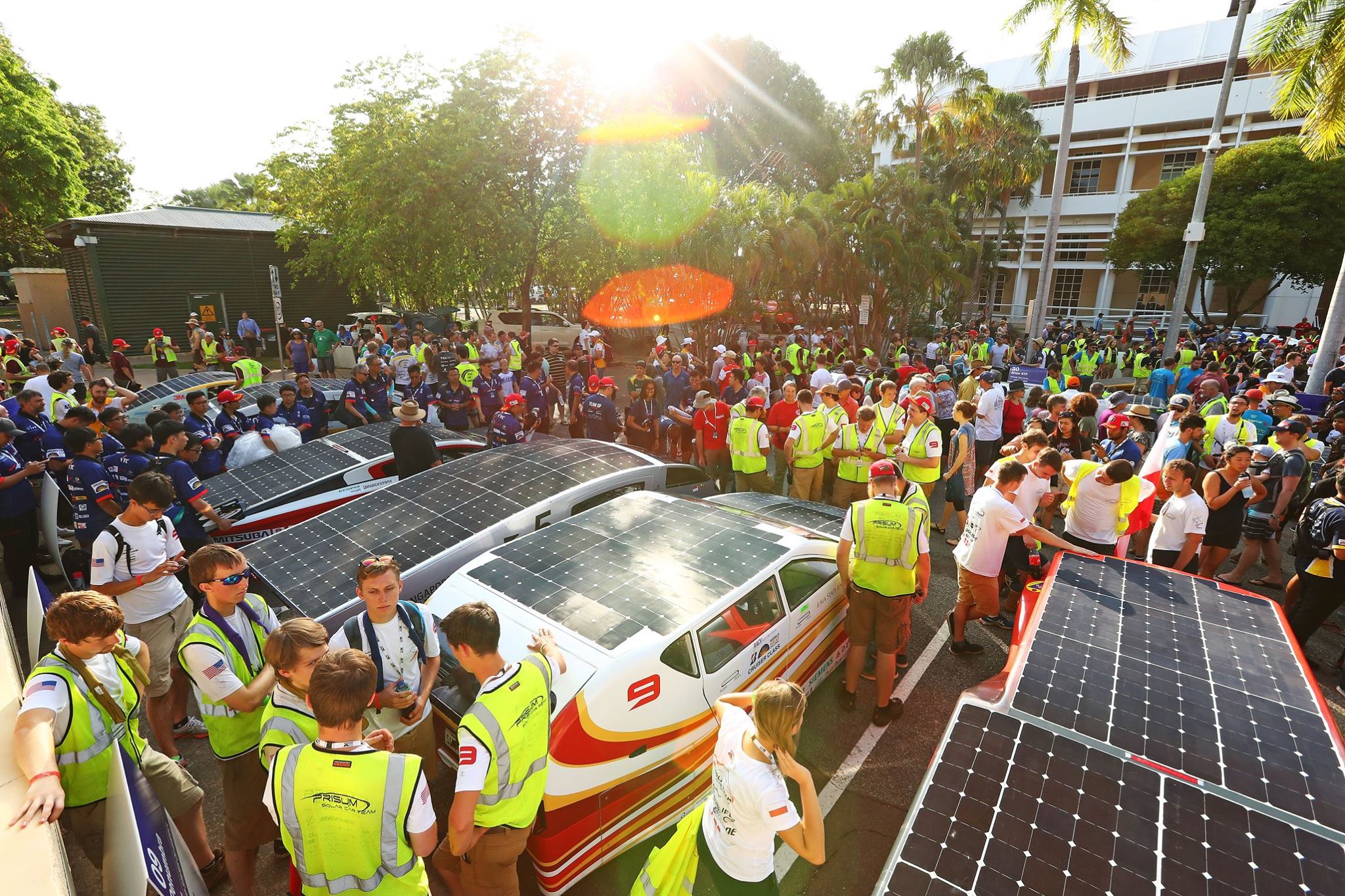 Participants in the race before the start from the central square in Darwin
Participants in the race before the start from the central square in DarwinThis year, the traditional
World Solar Challenge auto racing celebrates its 30th anniversary. Over the past years, this competition of solar-powered cars has become a real techno-parade of modern developments in the field of solar batteries and electric motors. According to past participants — such as Google co-founder Larry Page or Tesla’s co-founder and CTO, Jeffrey Strobel — participation in this event influenced their careers.
This year,
42 cars started at the start in three classes: Challenger, Cruiser and Adventure (out of competition). The Challenger Class is the fastest single-seat aerodynamic cars created for maximum endurance and energy efficiency. Cruiser class - cars of more traditional design for two or more pilots. These cars are better suited for mass production and everyday use, and the winner here is determined not only by time, but also by the number of pilots, energy efficiency and practical design, which is closest to the production car.
On October 8-15, participants will have to overcome the entire continent from north to south (3022 km). The route began in Darwin and will end in Adelaide. At the moment, according to the
online tracker , rally leaders have almost reached the middle of the road. The winner is expected at the finish on the morning of October 12th.

Most of the cars involved in the race, collected by university teams.
 Intermediate leader as of October 9: Nuna9 car from a team from Delft Technical University (Netherlands). This school has won the World Solar Challenge eight times already.
Intermediate leader as of October 9: Nuna9 car from a team from Delft Technical University (Netherlands). This school has won the World Solar Challenge eight times already.Since its inception in 1987, the aim of the competition was to demonstrate the capabilities of solar-powered vehicles, which are capable of traveling vast distances without a drop of gasoline in difficult conditions of high-speed rally. For example, the current leader in the Challenger class - the Nuna9 race car — raced through the first stages with a total distance of 1210 km in
15 hours and 54 minutes and 57 seconds , showing an average speed of 81.1 km / h. This is a very good result for solar panels of such a small area.
Under the terms of the competition, participants are allowed to start with a certain amount of charge in the batteries, and participants of the Cruiser class can even be recharged from the outlet along the way. The riders start every day at 8:00 am and are obliged to turn off the electric motors at 5:00 pm and set up camp exactly in the place where they stopped. The winner will be the first to cross the finish line in Adelaide.
Almost immediately from the start, some cars accelerated to more than 100 km / h, while others had technical problems. On the first day,
seven cars dropped out of the race for technical reasons
.
There are seven control points on the route, where riders can find out their current position relative to competitors, lag or odds, find out the weather forecast, undergo a quick checkup and get basic maintenance - at least to clean the solar panels from dust and tire up.
The historical record for the fastest passing of the track was set in 2009 by the team of Tokai University (Japan), which
overcame the track in 29 hours 49 minutes with an average speed of almost 100 km / h.
 Tokai Challenger car from Tokai University (2009)
Tokai Challenger car from Tokai University (2009)It will be difficult to beat the Japanese record, because since then the organizers of the competition have limited the maximum area of solar batteries to 4 square meters (in 2007-2015 the limit was 6 m²). Generally, since by 2005, the race cars began to consistently exceed the speed of 130 km / h, violating the rules of the road, they began to impose restrictions on their power for the sake of the safety of the pilots themselves (as in Formula 1). The problem is too fast technological progress: even a small area of solar panels is now enough to drive a car.
Participants are experiencing new technical solutions, which in the future may find application in serial commercial vehicles. Perhaps in the future no one will be surprised at the presence of solar panels on the roof of any car, be it a hybrid or pure EV, in any case such panels will not interfere.